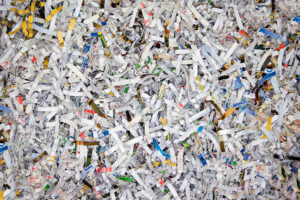In the vast landscape of waste management, one category demands meticulous attention due to its potential threat to public health and the environment – biohazardous waste. Understanding what qualifies as biohazardous waste is crucial not only for healthcare professionals but for anyone involved in waste disposal. This comprehensive blog aims to unravel the complexities of biohazardous waste, shedding light on its qualifications, characteristics, and the strict disposal protocols essential for safeguarding our communities.
I. Defining Biohazardous Waste:
Biohazardous waste, often denoted by the symbol of a biohazard, refers to materials that contain biological agents or substances that pose a threat to human health or the environment. These materials can come from various sources, including healthcare facilities, research laboratories, and even households. What qualifies as biohazardous waste is determined by the potential risk of infection or harm associated with its handling and disposal.
II. Categories of Biohazardous Waste:
Biohazardous waste can be categorized into several types based on its origin and potential risk. Common categories include:
a. Sharps Waste: This category includes needles, syringes, and other sharp objects that may be contaminated with infectious materials.
b. Infectious Waste: Materials such as cultures, tissues, and discarded vaccines fall under this category due to their potential to harbor infectious agents.
c. Pathological Waste: Human tissues, organs, and other anatomical waste are classified as pathological waste and require specialized handling.
d. Blood and Blood Products: Any discarded blood or blood-derived products, including serum and plasma, are considered biohazardous and necessitate proper disposal.
e. Contaminated Personal Protective Equipment (PPE): Used PPE, such as gloves and gowns, becomes biohazardous when contaminated with infectious materials.
III. Characteristics of Biohazardous Waste:
Understanding the characteristics of biohazardous waste is crucial for proper identification and disposal. Key characteristics include:
a. Infectivity: Biohazardous waste carries the potential for containing infectious agents, such as bacteria, viruses, or fungi.
b. Toxicity: Some biohazardous materials may be toxic, posing a threat to human health and the environment if not handled properly.
c. Radioactivity: In certain cases, biohazardous waste may also be radioactive, necessitating specialized disposal methods.
IV. Regulatory Framework:
The disposal of biohazardous waste is subject to stringent regulations to ensure public safety and environmental protection. Regulatory bodies, such as the Environmental Protection Agency (EPA) and the Occupational Safety and Health Administration (OSHA), set guidelines for the handling, packaging, transportation, and disposal of biohazardous waste.
V. Safe Disposal Protocols:
Disposing of biohazardous waste requires adherence to strict protocols to mitigate potential risks. Key disposal measures include:
a. Segregation and Labeling: Proper segregation of biohazardous waste from other waste streams and clear labeling with biohazard symbols are fundamental.
b. Secure Packaging: Biohazardous waste must be securely packaged in leak-proof containers to prevent spillage and contamination during transport.
c. Licensed Transportation: Biohazardous waste should only be transported by licensed and authorized carriers equipped to handle such materials safely.
d. Treatment and Disposal Facilities: Specialized treatment and disposal facilities, often using methods like incineration or autoclaving, ensure the complete and safe destruction of biohazardous waste.
VI. The Role of Healthcare and Research Facilities:
Healthcare and research facilities play a pivotal role in adhering to biohazardous waste disposal protocols. This includes staff training, the provision of proper disposal containers, and regular audits to ensure compliance with regulations.
Conclusion:
Biohazardous waste, with its potential to harm human health and the environment, demands meticulous attention and adherence to strict disposal protocols. Recognizing what qualifies as biohazardous waste is the first step in ensuring its safe and responsible management. By understanding the categories, characteristics, and regulatory framework surrounding biohazardous waste, we empower ourselves to protect our communities and the planet from potential risks associated with these materials. Compliance with disposal protocols, coupled with ongoing education and vigilance, is paramount in upholding the standards of safety and environmental responsibility in our waste management practices.










